
The Me 262 Project Wwii Aircraft, Fighter Aircraft, Military Aircraft, Fighter Jets, Luftwaffe
The project ran into problems and CFII became bogged down in lawsuits. In 1998, the project and its assets were moved up to Everett and the Me 262 Project picked up where CFII left off. Nearly 10 years after the start of the Stormbird Project, Flight Article number 1 (FA1) took to the air in 1992.

New paint scheme for the Me 262 project plane Military Trader/Vehicles
The Me 262 Project is a company formed to build flyable reproductions of the Messerschmitt Me 262, the world's first operational jet fighter. The project was started by the Texas Airplane Factory and administered by Classic Fighter Industries. It is based at Paine Field in Everett,.

Aviation photographs of Operator Me 262 Project ABPic
At the apex of World War II, a pioneering innovation took to the skies and forever changed the face of aviation. The Messerschmitt Me 262, the world's first operational jet-powered fighter aircraft, streaked across the tumultuous tapestry of war with a blend of speed and power previously unseen. Its swept wings and distinctive shape cast an indelible silhouette that would mark the dawn of a.

Evergreen Air and Space Museum Me262A1c Schwalbe Replica 110999 .The Me 262 Project's third Me
The Messerschmitt Me 262 was the world's first operational jet-powered fighter aircraft. Aircraft design efforts actually began prior to World War II in 1939, but problems with the engines prevented the aircraft from attaining operational status with the German Luftwaffe until mid-1944. This was one of the most technologically advanced.

Messerschmitt Me 262 Schwalbe Military Aviation Museum
In 1978, the National Air and Space Museum began an extensive restoration project to bring the Me 262 back to the same condition as when it served with the famous JG 7 (Fighter Wing 7), complete.

The Me 262 Project Building NewProduction Me 262s
The Messerschmitt Me 262, nicknamed Schwalbe (German: "Swallow") in fighter versions, or Sturmvogel (German: "Storm Bird") in fighter-bomber versions, is a fighter aircraft and fighter-bomber that was designed and produced by the German aircraft manufacturer Messerschmitt.It was the world's first operational jet-powered fighter aircraft.. The design of what would become the Me 262 started in.

New paint scheme for the Me 262 project plane Military Trader/Vehicles
Messerschmitt Me 262A Schwalbe. Developed from a 1938 design by the Messerschmitt company, the Me 262 Schwalbe was the world's first operational turbojet aircraft. First flown under jet power on July 18, 1942, it proved much faster than conventional airplanes. Development problems (particularly its temperamental engines), Allied bombings and.
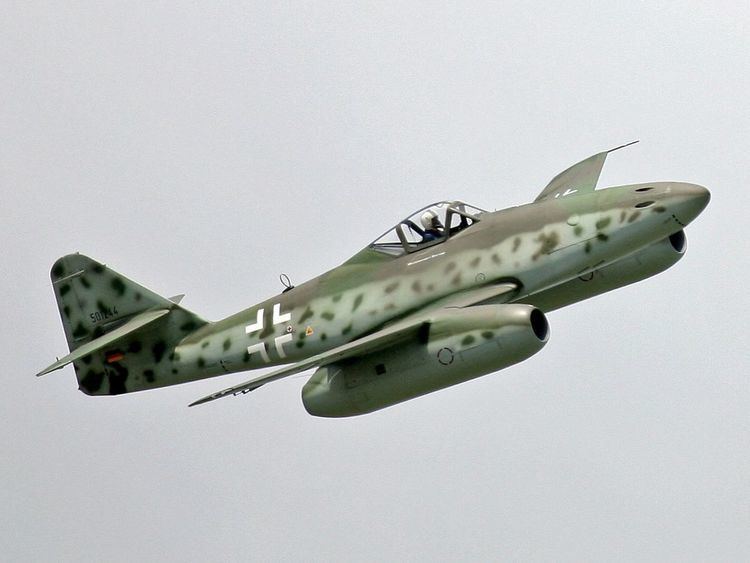
Me 262 Project Alchetron, The Free Social Encyclopedia
To see the first design operational jet fighter do a demonstration was going to be the holy grail for the Royal International Air Tattoo. Here we have the ME.

Messerschmitt Me 262 the world's first operational jet fighter [1767x994] r/WarplanePorn
The Me 262 began as Messerschmitt's Projekt 1065 in 1939, the design of a jet aircraft by the company following Ernst Heinkel's flight in his He-178, the first aircraft to fly under turbojet power. Though the German government favored the Messerschmitt design, the project suffered at the hands of Hermann Göring, head of the Luftwaffe, who cut.
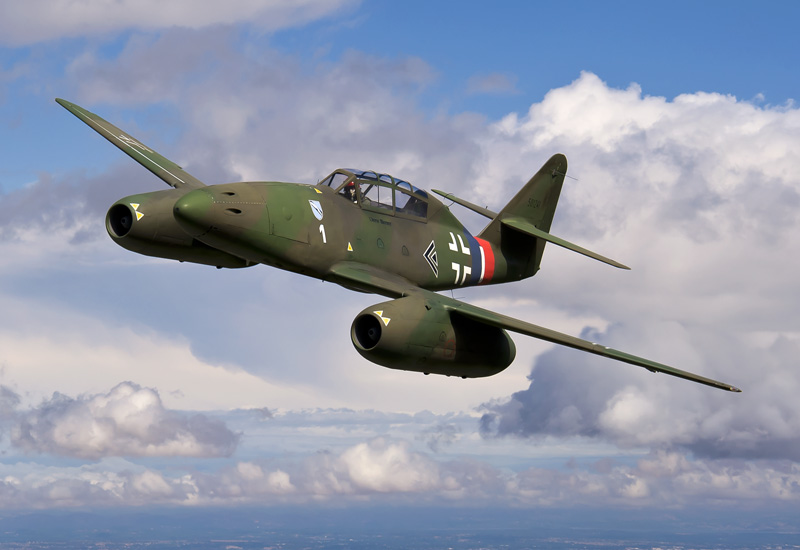
Extraordinary Flight Training Opportunity in a Messerschmitt Me 262 Warbirds News
Prototypes Me 262 V3. Messerschmitt began work on a single-seat jet-powered fighter before the start of World War II. The initial design was known as Projekt 1070 (P.1070). A twin-engined straight-wing design, the P.1070 was canceled in favor of the similar P.65. The P.65 was designed with a straight wing, similar to the P.1070, as well as an unswept vertical stabilizer.
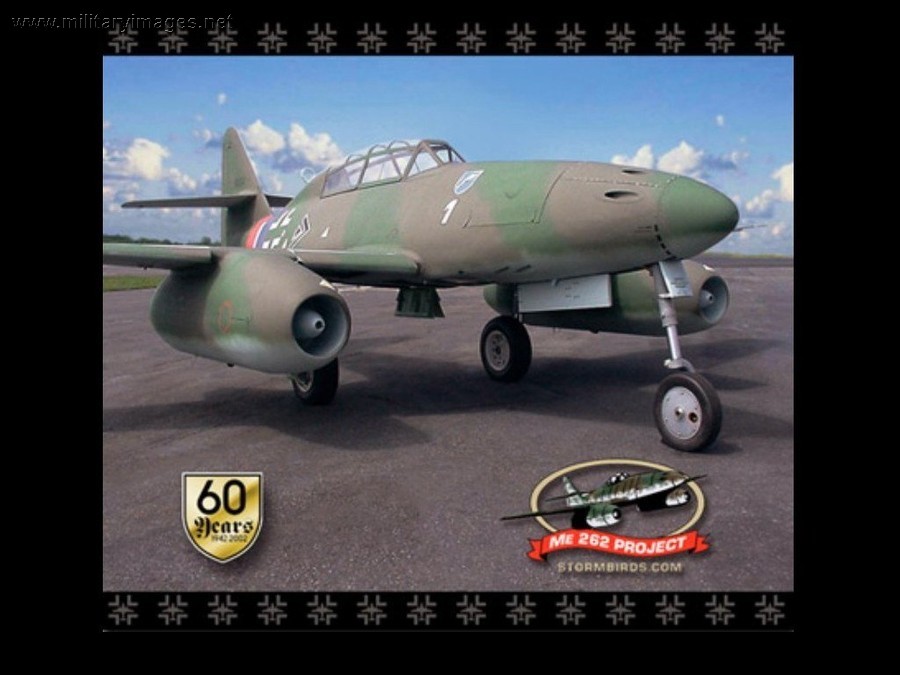
Me 262 Project Wallpaper A Military Photos & Video Website
After being moved to Memmingen, the aircraft was test flown by a Messerschmitt factory pilot and transferred to Eger for modification into an unarmed photo-reconnaissance variant (Me-262A-1a/U3). This involved the removal of all nose armament and the installation of a pair of R6-50/30 vertical cameras. In addition, large, teardrop, fairings.
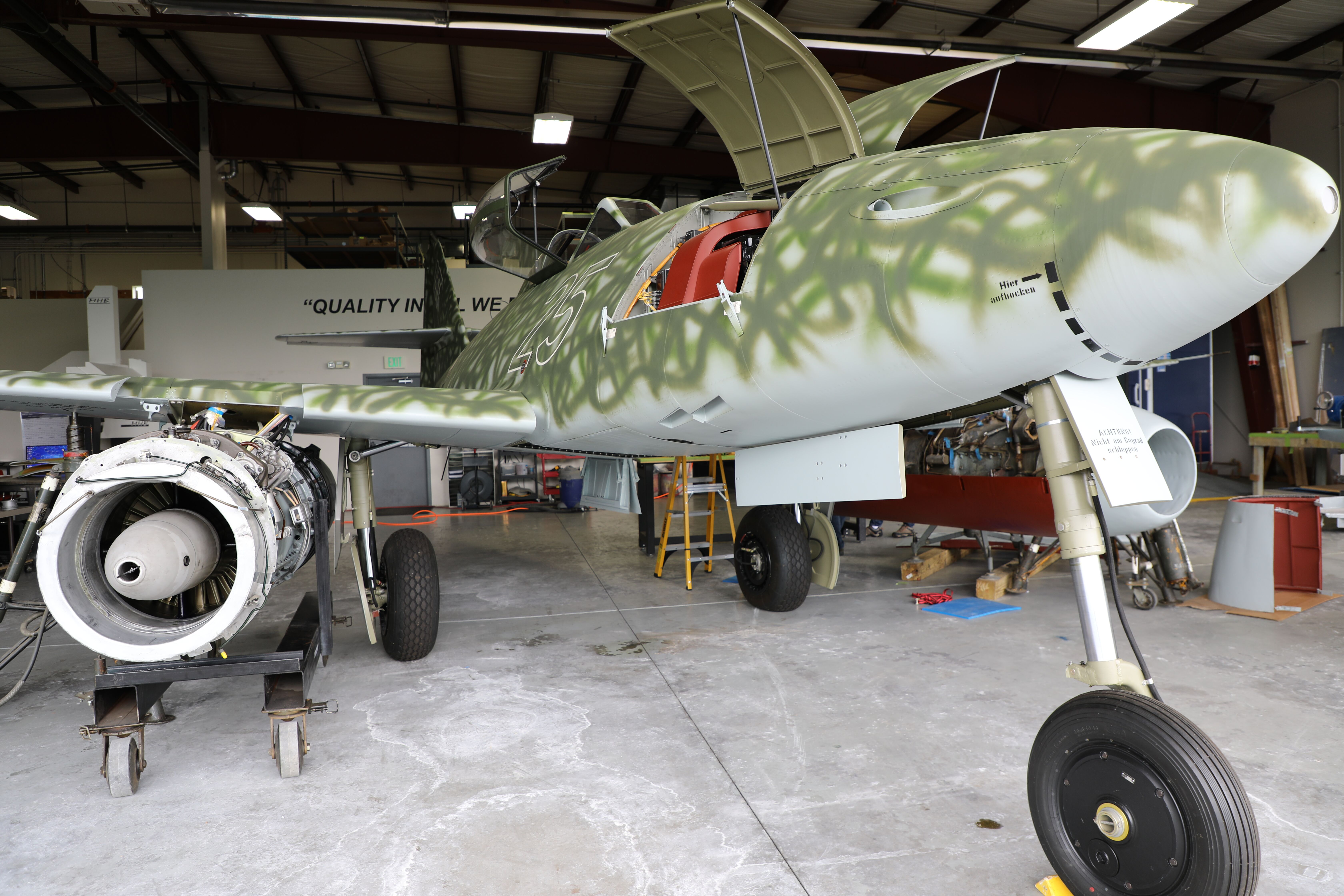
Museums' Me 262 Gets its Colors Flight Journal
The Me 262 project was founded in 1993 with the aim of building a new series limited to five Me 262 aircraft. So far, the team has completed and flown two aircraft and a third is nearing completion at their Paine Field headquarters in Washington State. The new Me 262 was designed to be as faithful as possible to the original.

Messerschmitt Me 262 Breaking the Sound Barrier, April 9th 1945 in 2021 Aviation art, Wwii
The Messerschmitt Foundation, a major supporter of the Me 262 Project, owns and flew the plane. The Me 262 has been a fascinating topic for global conversations among aviation and history fans in recent years, ever since the first new model of the famous plane flew over Paine Field in 2002—60 years after the original Me 262 flew over Germany.

The Me 262 Project Building NewProduction Me 262s
The historic Me 262 Schwalbe (Swallow) was the first jet-powered aircraft to see combat. The project began in 1938 when Messerschmitt was called upon to design a new fighter powered by two gas turbine engines being developed by B.M.W. The configuration eventually chosen featured a sleek streamlined fuselage with the two podded engines carried.

The Me 262 Project Building NewProduction Me 262s
The Me-262 was developed and built in Germany by the Nazis and was their first operational jet fighter in World War 2. The American Me-262 Project was launched in January 2003 in Washington (Everett) and the aim was to try to reproduce a few versions of the Me-262. These attempts utilized one single-seated A-1c, two twin-seated B-1cs and two.
[Colorized] First prototype of the Me 262, the world's first operational jet fighter aviation
The project aerodynamicist on the design of the Me 262 was Ludwig Bölkow. He initially designed the wing using NACA airfoils modified with an elliptical nose section. Later in the design process, these were changed to AVL derivatives of NACA airfoils, the NACA 00011-.825-35 being used at the root and the NACA 00009-1.1-40 at the tip.